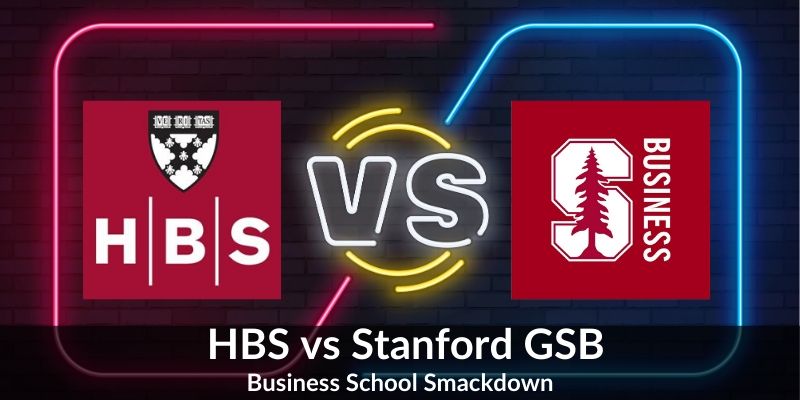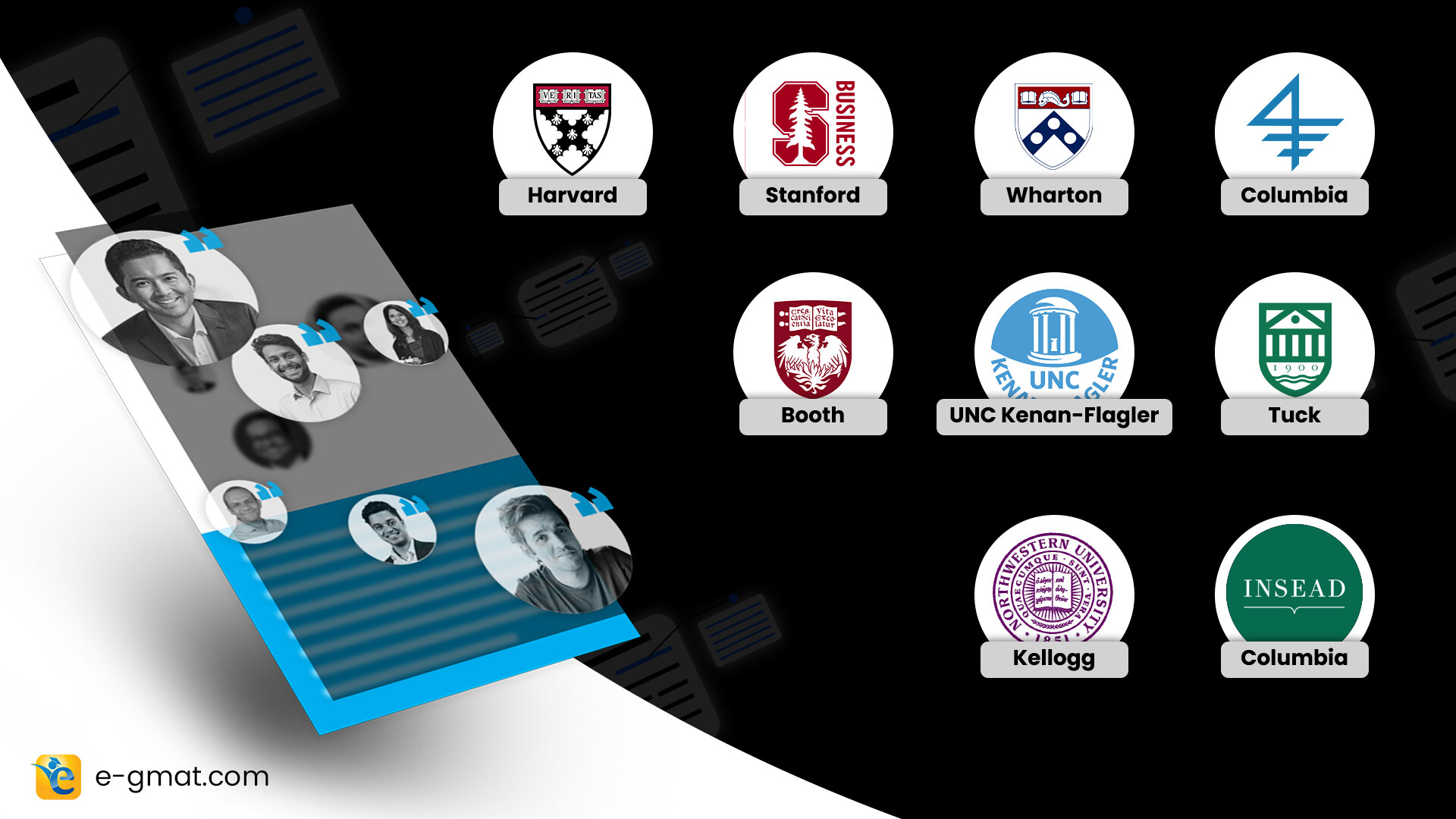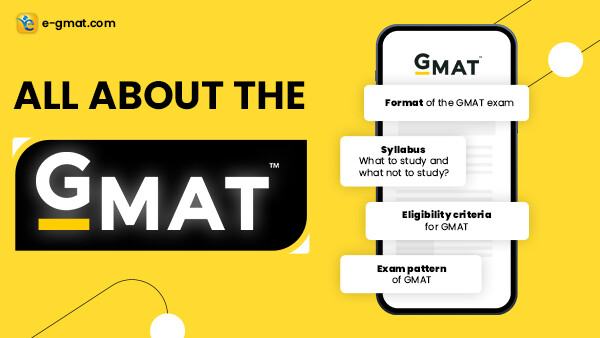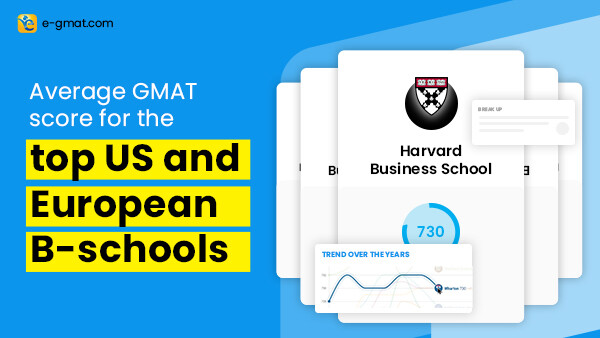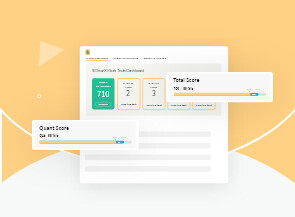Many believe that Harvard is the place for those who want to climb a traditional corporate ladder, whereas Stanford is the place for those who want to do a start-up. In fact, 13% of Harvard’s MBA class in 2022 started their own venture compared to 19% at Stanford. In terms of prestige and status, both schools rank high. Thus, many people who apply to Stanford also apply to Harvard and vice versa. This article highlights various parameters to analyze Stanford vs. Harvard MBA.

Unlike Stanford, which follows the German model of a research university, Harvard is inspired by the European university model. Not only that, many other points of differences exist between the two. Here are the parameters to analyze Stanford vs. Harvard:
Do you aspire to get an admit into Stanford or Harvard MBA program?
Both these schools have an average GMAT score of 730+, therefore, A GMAT score of 740+ will make your application stronger when applying to Stanford or Harvard. Also, a GMAT score of 730+ yields incremental $500K in ROI? Start your GMAT Preparation by Signing up for our FREE Trial and get access to FREE online GMAT preparation resources. We are the most reviewed GMAT preparation company on GMATClub with more than 2500 reviews.
Stanford vs. Harvard: Location and class profile
Both Stanford and Harvard are top universities in America, located on the West and East coast of the united states, respectively.
Stanford University is in the heart of “Silicon Valley,” home to Google, Hp, Yahoo!, and many others. It’s located between San Jose and San Francisco. The campus is about 8,180 acres, with the Pacific Ocean and Santa Cruz Mountains to the west and San Francisco bay to the east. 11,000+ students live on campus, and biking is a popular way to get around. There are free campus shuttles and car-share available too.
Harvard University is in Cambridge, Massachusetts, a colorful, multicultural city just across the Charles River from Boston. Cambridge hosts two of the world’s premier educational institutions – Harvard University and the Massachusetts Institute of Technology, making it a center of academics and higher learning. The campus is about 5,083 acres and occupies several locations in Cambridge, such as Harvard Yard and Harvard Square (a popular area filled with bookstores, restaurants, cafes, and stores).
Class of 2024 Profile Full-Time MBA

The table below represents Stanford vs. Harvard Class of 2024 profile:
| Stanford vs. Harvard | Stanford | Harvard |
| Class Size | 424 | 1015 |
| Female | 44% | 46% |
| Average GMAT | 737 | 730 |
| GMAT Range | 630-790 | 540-790 |
| Average Work experience | 4.9 | 5.0 |
| Average GPA | 3.76 | 3.70 |
| International Students | 37% | 38% |
Harvard’s class size of 1015 is quite large compared to Stanford, which is 424 for a full-time MBA program. Similarly, the average GMAT score for Stanford (737) is slightly high as compared to Harvard (730), with an average GPA of around 3.7 for both business schools. The percentage of international students at Stanford vs. Harvard is 37% and 38%, respectively.
Know what a good GMAT score for Stanford and Harvard.
A GMAT score of 740+ will make your application stronger when applying to Stanford or Harvard. Also, a GMAT score of 730+ yields incremental $500K in ROI? Start your GMAT Preparation by Signing up for our FREE Trial and get access to FREE online GMAT preparation resources. We are the most reviewed GMAT preparation company on GMATClub with more than 2500 reviews.
Stanford vs. Harvard: Placement and Internship Opportunities
Both Harvard and Stanford offer personalized/customized career plans for their students.

Stanford Career Management Center (CMC) provides relevant connections, educational resources, and one-on-one advising at every stage of the student’s career. There are three stages – Explore, prepare, and launch. Even after a student graduates, they can continue to have access to Harvard’s job board, programs with alumni, and career advising.
Similarly, Harvard’s career and professional development center provide personalized career resources to help students make an impact over the course of their life. Through the HBS MBA program, the career center holds various activities, events, and coaching. Also, Harvard provides four free career coaching sessions each year for life to its students.
Placement Statistics – Employment reports
95% of HBS MBA students and 93% of Stanford MBA students received offers for full-time employment within three months of graduation. The median base salary for both Stanford and Harvard is $175,000 each. The median signing bonus is $30,000 for Stanford and $30,000 for Harvard.
The majority of Stanford graduates in 2022 are working in the Finance function (33%), followed by General management (23%), and Marketing/Sales (22%). On the other hand, a higher number of Harvard 2022 graduates, too, ended up in Finance (33%), followed by Consulting (26%), and Marketing (12%).
The table below represents the placement statistic for Stanford vs. Harvard:
| Employment reports – Placement Statistics – class of 2022 | ||
| Stanford vs. Harvard | Stanford | Harvard |
| Job offers within three months of graduation | 93% | 95% |
| Median Base Salary | $175,000 | $175,000 |
| Median Sign-on Bonus | $30,000 | $30,000 |
| Placement Statistics by major Functions | ||
| Consulting | 15% | 26% |
| Business Development | N/A | 7% |
| Finance | 34% | 33% |
| General Management | 23% | 10% |
| Marketing | 22% | 12% |
| Strategic Planning | N/A | 8% |
| Operations/Logistics | N/A | N/A |
| Other | 6% | 4% |
Note: Data from Stanford and Harvard Employment report 2022.
Learn more about Stanford and Harvard Class Profile, Admissions, Placement report, and Notable Alumni.
Internship Statistics
The average monthly salary for Stanford vs. Harvard Summer internship is $ 8,667 and $9,500, respectively, for the Class of 2022.
33% of Stanford MBA interns are in the Finance function, followed by technology (26%) and Consulting (6%), whereas 32% of Harvard interns are in the finance function, followed by Consultancy (16%), and Business development (12%).
Have a look at the Summer Internship Statistics Class of 2022 for Stanford vs. Harvard:
| Summer Internship Statistics for Class 2022 | ||
| Stanford vs. Harvard | Stanford | Harvard |
| Average Monthly Median Base Salary | $8,667 | $9,500 |
| Internship Statistics by major Functions | ||
| Consulting | 6% | 16% |
| Finance | 33% | 32% |
| Marketing | 23% | 15% |
| Technology | 26% | NA |
| Operations/Logistics | 1% | NA |
| Others | 11% | 37% |
Note: Data from Stanford and Harvard Internship report for Class 2022.
Want to get into Stanford or Harvard MBA program? When it comes to MBA Application, your GMAT score holds 16% of weightage. Start your GMAT Preparation with our free trial today and get access to quality online content on GMAT.
Stanford vs. Harvard: Rankings

Stanford has an advantage when it comes to ranking. Both schools have a few points of difference on various ranking lists. For example, QS World University ranks Stanford #1 and Harvard #2 for the best business schools in 2022.
In US News ranking for best business school (MBA), Stanford has moved to the third rank. Harvard MBA, on the other hand, ranks 5th. Similarly, the Blomberg BusinessWeek MBA ranking 2022-23 shows that Stanford ranks 1 and Harvard ranks 2.
The only ranking list where Harvard equals Stanford is The FT. For 2023, both Harvard and Stanford rank #2. It’s interesting to see that both schools have maintained their ranks and have always made it to the top 10 business schools ranking list.
The global ranking list for Stanford vs. Harvard from the year 2022-2023 is:
| Stanford vs. Harvard – Global Ranking Lists | Stanford | Harvard |
| QS World University Ranking | 1 | 2 |
| US News Ranking | 5 | 3 |
| Bloomberg (Only US) | 1 | 2 |
| FT Ranking | 2 | 2 |
Stanford vs. Harvard: MBA Program Focus
Both schools have a two-year residential MBA program that focuses on general management. According to US News, Stanford ranks number two in management, while Harvard ranks number one.
Both schools are battling towards becoming number one in entrepreneurship, with Stanford ranking at #2 and Harvard at #4.
More than 60 different courses related to innovation and entrepreneurship are offered to Stanford GSB students, whereas at Harvard, one in four electives has an entrepreneurship focus. Harvard has approximately thirty-nine faculty members who teach entrepreneurship versus 15 faculty members at Stanford.
According to Harvard’s website, there are 32 courses on entrepreneurship management, with 50% of HBS grads creating at least one venture. Also, 13% of the HBS MBA batch 2022 joined a start-up. On the other hand, 19% of Stanford’s 2022 batch is starting a new venture.
Stanford ranks #3 in marketing, while Harvard ranks #6 in marketing. But Finance at Harvard ranks #7, after Stanford. Harvard gets an edge over Stanford in a Non-profit specialty. For Non-profit, Stanford ranks #3, and Harvard ranks #2. On the other hand, Stanford beats Harvard in the Production/ Operations specialty, with Stanford at #5 and Harvard ranking at #11, according to US News.
Stanford vs. Harvard: MBA Program and Curriculum
Compared to other business schools like Booth, Kellogg, NYU, etc., Stanford and Harvard students cannot waive their classes. Therefore if a student can prove a certain level of proficiency, he/she cannot test out of classes making the curriculum at Stanford and Harvard not fully flexible.

Each student must take the same classes, which can be beneficial as it creates a common language and discussion among classmates.
Moreover, Stanford offers various personalized experiences than Harvard, where students can tailor their MBA experience through social innovation opportunities, leadership experiences, communication programs, and many more.
Both schools offer a joint degree program where credit from a single course may count towards both degrees. Stanford joint degree programs include MA in Education/MBA, MS in Electrical Engineering/MBA, and MS in Environment and Resources/MBA. In contrast, Harvard offers joint degrees from Harvard law school, dental medicine, engineering, arts, and science, etc.
Stanford GSB Full-Time MBA
Stanford MBA program is a two-year residential course. The first-year curriculum focuses on building a student’s general management knowledge and gaining global exposure. It consists of core courses with potential room for one to two electives, where students can solve complex managerial issues with a series of classes.
Some of the core courses include ethics in management, finance, leadership labs, optimization and simulation modeling, macroeconomics, marketing, human resource management, and many more.
The second-year at Stanford offers the students to tailor their experience through electives, dual degrees, seminars, and courses at other Stanford schools. As per Stanford’s curriculum website, students in the second year will likely take all electives. The courses offered can help students to broaden their perspective and experience, strengthen their areas of development, and ensure a well-rounded general management education.
Some of the Elective topics include accounting, finance, leadership, political economics, strategic management, operations, human resource, and many more.
Stanford also offers compressed courses where the student takes a series of two-week classes to build in-depth knowledge in specific business topics. Students can also take Stanford courses outside Stanford GSB and apply 12 class units towards their MBA program. The areas where students can pursue particular experience and knowledge are – arts, health care, public policy, manufacturing, energy, design, and many more.
Want to get into Stanford? Read our article on How to get into the Stanford MBA program.
Harvard Business School Full-Time MBA
Harvard MBA program is a two-year course which includes a range of exciting courses, where the goal is to give students a firm grasp of broad-based fundamentals. There are two semesters – fall and spring.
The year begins with leadership activities and small team projects where all students pursue the same course of study. The required curriculum includes courses in Finance, leadership, and organizational behavior (LEAD), marketing, technology, interpersonal skills, FIELD Global Immersion, strategy, and many more.
The second-year at Harvard focuses on the selection of elective courses that will help in building the concepts developed in the required curriculum.
Students are required to take up to five courses per semester in any combination from the pool of over 100 courses. Harvard also offers cross-registration for courses in other select graduates’ program – MIT, Harvard graduate school, and the Fletcher school of law and diplomacy.
During the end of the MBA program, students also have an opportunity to participate in the Immersive Field Course (IFC), where the majority of content consists of an on-the-ground assignment.
Want to get into Harvard? Read our article where we provide 7 steps to get into the Harvard MBA Program.
Stanford vs. Harvard: Teaching Method, Experiential Learning, and Global Opportunities
Harvard teaching method is more focused on the Case method and field method (FIELD), whereas Stanford employs a mixture of lectures and case methods.
Been a pioneer in the case method, Harvard explains how this method puts students in the role of the decision-maker on their website. They describe it as a dynamic process of exchanging perspectives, building on each other’s ideas, and countering and defending points, where students become adept at analyzing issues, making decisions, and exercising judgment.
Harvard faculty produces approximately 350 new cases per year and over 80% of cases throughout the world. Class participation is also one of the significant components of the HBS learning model, and 50% of a student’s grade in many courses is based on the quality of class participation. Students participate in more than 500 case discussions during their time in HBS.
The Field Immersion Experience for leadership development (FIELD) is a year-long course that gives first-year students meaningful and numerous opportunities to act as leaders and translate their ideas into practice.
Apart from this, Harvard also has the Section Experience where students get assigned to a specific section (a group of 90 diverse students) with which they will complete the required curriculum.
On the other hand, Students at Stanford learn by participating in group projects, simulations, and role-playing scenarios in addition to the case method. It also hosts seminars that involve a group of 10 students reporting and discussing what they have learned about the topic based on their research.
Stanford also offers a Social entrepreneurship and Impact fund program for experiential learning. For the former, students work with Stanford coaches, faculty, and expert advisors to develop their social venture idea and learn how to turn it into reality after graduation. For the latter, students work to identify organizations that face challenges and helps them to gain familiarity with day-to-day activities.
Global Opportunities
Stanford focuses on building a global mindset by offering global management immersion experience, seminars, study trips, exchange programs, and self-directed experiences (creating your own global internship). All Stanford MBA students have to participate in it. On the other hand, Harvard offers Immersive Field Courses (IFC), which are field-based electives for second-year MBA students to apply their learning in countries around the world. In the last nine years, HBS MBA students have participated in 41 IFC courses and traveled to 15 countries.
Stanford vs. Harvard: Admissions Process and Cost of Attendance

Both schools follow a similar admissions process where the candidate submits an online application form, after which shortlisted candidates go for an interview. Harvard has an additional step required after the interview, where within 24 hours of the HBS interview, candidates submit a written reflection online.
The online application for both schools requires two letters of recommendation, academic transcripts, GMAT/GRE scores, essay, resume, personal information, and application fee.
Here are some tips for writing Stanford and Harvard MBA Essay Questions 2023.
The application fee for Stanford is $275, and Harvard’s is $250. Also, the total estimated cost of attendance for Stanford is $115,917 and $110,740 for Harvard.
The table presents the cost of attendance for Stanford vs. Harvard:
| Cost of Attendance | ||
| Stanford vs. Harvard Cost | Stanford | Harvard |
| Tuition | $76,950 | $73,440 |
| Living Allowance | $36,198 | 15,904 |
| Books and Supplies | $1,755 | N/A |
| Materials and program fee | $900 | $2,550 |
| Transportation | $1,095 | N/A |
| Medical Insurance | $6,768 | $4,080 |
| Health Fee | $723 | $1,304 |
| Room and utilities | N/A | $16,540 |
| Total | $124,389 | $112,764 |
Note: Stanford’s Cost of Attendance is for first-year students in the academic year (2022-23), whereas Harvard’s cost of attendance is for a 9-months academic year for a single person.
Learn more about the total MBA cost and Tips to make your MBA pocket-friendly in 2023.
Application Deadline for Stanford vs. Harvard
| Application deadline for Stanford vs. Harvard | ||
| Number of Rounds | Stanford | Harvard |
| Round 1 | 13 Sep 2022 | 07 Sep 2022 |
| Round 2 | 05 Jan 2023 | 04 Jan 2023 |
| Round 3 | 11 Apr 2023 | N/A |
| Decision Released | ||
| Round 1 | 08 Dec 2022 | 06 Dec 2022 |
| Round 2 | 30 Mar 2023 | 29 Mar 2023 |
| Round 3 | 25 May 2023 | N/A |
Note: Data from Stanford and Harvard’s official site
Check out the last date to apply to top business schools in 2022-2023.
Stanford vs. Harvard: Alumni Network

Harvard alumni network is bigger than Stanford’s. Harvard claims to have more than 47,000 MBAs, whereas Stanford claims to have more than 30,000 MBAs alumni. Also, 40,000 HBS alumni have mentioned in their directory listing that they are available and willing to help students by assisting with job searches and career advice. Similarly, Stanford GSB also provides numerous opportunities for alumni to connect with the school’s students through mentorship programs.
Alumni events at Harvard are both social (dinners, happy hours, sporting events, etc.) and professional (seminars, discussions, etc.). Similarly, Stanford sponsors one alumni dinner per quarter with a cap at 20 attendees to foster better interaction between alumni and students.
Bloomberg survey 2019, where MBA grads rate the power of their alumni network, Stanford GSB was ranked #1 with a score of 100/100. Harvard Alumni ratings are not far behind with a score of 98/100, rank #2.
Thus, the alumni network at both schools is strong, and you can’t go wrong by being part of either the Stanford or Harvard Alumni network.
Stanford vs. Harvard: Scholarship Programs
To help students fund their MBA, Stanford offers a combination of student loans and fellowship awards to U.S. Citizens/ Permanent residents and international students. The average fellowship is approximately $35,000 per year or $70,000 in total awards.
Stanford calculates an expected student contribution (a portion of student’s income and assets to fund their MBA) based on their financial situation. A combination of loans and fellowships then covers the gap between the expected student contribution and the cost of attendance.
On the other hand, Harvard also offers financial aid throughout a student’s time starting with Tuition assistance, to Summer Fellowships, to Career support and Exploration:
- Tuition Assistance: Need-based Scholarships, student loans, and fellowships to meet the cost of attending school
- Summer Fellowships: Financial support for summer internship opportunities between first and second year
- Career Support and Exploration: Financial assistance such as loan reduction and repayment for students after graduation
Over the past two years, the average need-based scholarship awarded to HBS students is $80K.
Learn about various MBA scholarships available for Indian and International Students.
Stanford vs. Harvard: Facilities
When it comes to facilities, both schools are at par. The Knight management center at Stanford, which opened in 2011, consists of eight environmentally-friendly buildings and three quadrangular courtyards. It has 11 tiered classrooms that have three screens and cameras for computer presentations. Apart from that, the Business Library at Stanford is open for all members of the Stanford community.
Harvard’s MBA campus consists of several buildings that are close to most other Harvard schools with shopping and dining options. Harvard MBA campus has 19 classrooms that are fully equipped to provide faculty presentation requirements.
There are various amenities available for students at Stanford GSB and Harvard Business school. Stanford amenities include cafes, meeting places, studios, and many more, which is quite similar to Harvard.
Do you aspire to get an admit into Stanford or Harvard MBA program?
Both these schools have an average GMAT score of 730+, therefore, A GMAT score of 740+ will make your application stronger when applying to Stanford or Harvard. Also, a GMAT score of 730+ yields incremental $500K in ROI? Start your GMAT Preparation by Signing up for our FREE Trial and get access to FREE online GMAT preparation resources. We are the most reviewed GMAT preparation company on GMATClub with more than 2500 reviews.
Here are some related articles on other business schools and MBA Admissions:
- Kellogg vs. Booth: which is better for an MBA?
- M7 Business Schools
- Top one Year MBA Programs in the U.S.
- MBA Admissions 2020 – how to get into a top business school?
- MBA Acceptance rate and Yield rate for top business schools
- MBA Application Process- GMAT Score Weightage and Other Factors
- How to improve your MBA profile and Boost your Application?


